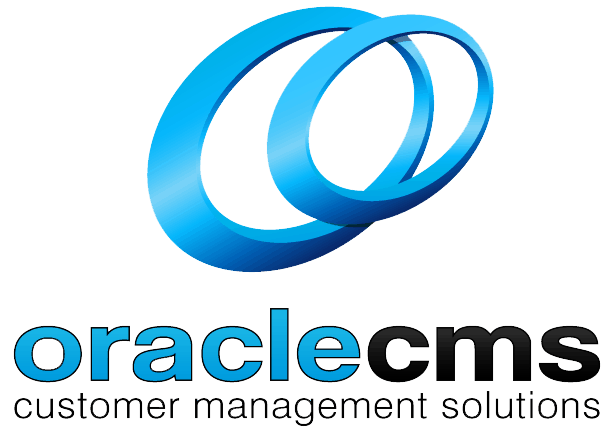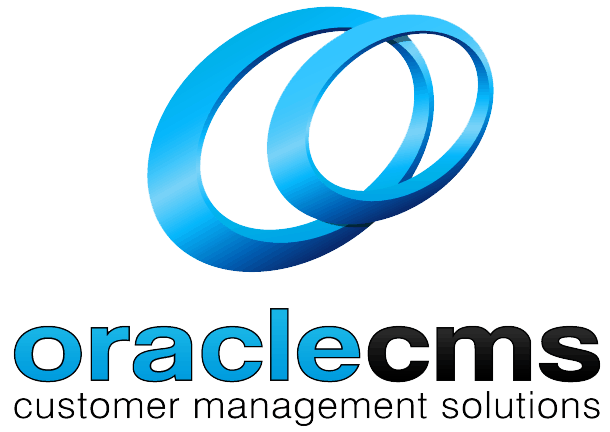The Top 10 Contact Centre Metrics You Should Be Tracking
In today’s highly competitive business landscape, delivering exceptional customer service is crucial for organizations across industries. Contact centres play a pivotal role in customer support and engagement, making it essential for businesses to measure and optimize their performance. Tracking contact centre metrics provides valuable insights into the efficiency, effectiveness, and overall customer experience delivered by these contact centres. In this article, we will explore the top 10 contact centre metrics that every organization should be tracking and how they can impact business success.
Introduction
Contact centres serve as the primary touchpoint for customers seeking assistance, information, or resolution of issues. As customer expectations continue to rise, it becomes imperative for businesses to have a clear understanding of their contact centre performance. Measuring and analyzing contact centre metrics allows organizations to identify areas for improvement, enhance operational efficiency, and drive customer satisfaction. Let’s dive into the ten most important contact centre metrics you should be tracking.
Importance of Contact Centre Metrics
Contact centre metrics provide a quantitative assessment of various aspects of contact centre operations. These metrics help organizations gauge their performance, identify areas of improvement, and make data-driven decisions. By tracking and analyzing these metrics, businesses can enhance customer satisfaction, reduce costs, optimize resource allocation, and improve overall operational efficiency.
Key Contact Centre Metrics
First Call Resolution Rate (FCR)
The First Call Resolution Rate (FCR) measures the percentage of customer inquiries or issues that are resolved during the initial contact. A high FCR indicates efficient and effective problem-solving, reducing the need for customers to make multiple contacts for the same issue. FCR directly impacts customer satisfaction and is a key indicator of contact centre performance.
Average Handle Time (AHT)
Average Handle Time (AHT) refers to the average duration of a customer interaction with a contact centre agent. It includes the time taken to resolve the customer’s query or issue, along with any additional hold or transfer times. Tracking AHT helps identify opportunities to streamline processes, improve agent efficiency, and reduce customer wait times.
Customer Satisfaction Score (CSAT)
Customer Satisfaction Score (CSAT) is a metric used to measure customer satisfaction with the overall contact centre experience. It is typically obtained by asking customers to rate their satisfaction on a scale after interacting with the contact centre. CSAT surveys provide valuable feedback and insights into customer perceptions, helping organizations identify areas for improvement and prioritize action.
Net Promoter Score (NPS)
Net Promoter Score (NPS) is a metric that measures customer loyalty and willingness to recommend a company or its services to others. NPS surveys are conducted by asking customers a simple question: “On a scale of 0 to 10, how likely are you to recommend our contact centre to a friend or colleague?” NPS helps identify promoters, passives, and detractors, enabling organizations to focus on enhancing customer loyalty and advocacy.
Service Level Agreement (SLA) Adherence
Service Level Agreement (SLA) Adherence measures the contact centre’s ability to meet the agreed-upon response and resolution times defined in the SLA. SLAs set performance targets and expectations for contact centres, ensuring that customer inquiries are handled within specified timeframes. Monitoring SLA adherence helps identify areas where service levels are falling short and allows for corrective actions to be taken.
Abandoned Call Rate (ACR)
Abandoned Call Rate (ACR) measures the percentage of calls that are prematurely terminated by customers before reaching an agent. High ACR can indicate long wait times, inadequate self-service options, or routing issues. By minimizing the ACR, contact centres can ensure that customers have a seamless and satisfactory experience.
Average Speed of Answer (ASA)
Average Speed of Answer (ASA) is the average time it takes for calls to be answered by contact centre agents. It measures the efficiency of call routing and agent availability. Monitoring ASA helps identify bottlenecks and inefficiencies in call handling processes and enables contact centres to optimize staffing and resource allocation.
Occupancy Rate
Occupancy Rate measures the percentage of time contact centre agents are actively engaged in handling customer interactions. It takes into account the time spent on calls, as well as wrap-up and administrative tasks. Maintaining an optimal occupancy rate ensures efficient agent utilization while avoiding burnout and excessive wait times for customers.
Agent Attrition Rate
Agent Attrition Rate measures the rate at which contact centre agents leave the organization. High attrition rates can negatively impact contact centre performance and customer experience. By tracking and addressing the underlying causes of agent attrition, organizations can improve agent satisfaction, reduce recruitment and training costs, and enhance overall operational stability.
Call Quality Score
Call Quality Score evaluates the quality of customer interactions based on predefined criteria such as adherence to scripts, professionalism, empathy, and problem resolution. Call monitoring and evaluation enable organizations to provide targeted coaching and training to agents, leading to consistent and high-quality customer experiences.
How to Measure Contact Centre Metrics
Measuring contact centre metrics requires the implementation of appropriate tools and systems. Contact centre software and customer relationship management (CRM) platforms often have built-in reporting and analytics capabilities to track key metrics. These systems generate real-time and historical data, enabling organizations to monitor performance, identify trends, and make informed decisions.
Benefits of Tracking Contact Centre Metrics
Tracking contact centre metrics offers several benefits for organizations, including:
- Improved Customer Satisfaction: By monitoring and optimizing contact centre metrics, businesses can deliver superior customer experiences, resulting in higher satisfaction levels.
- Enhanced Operational Efficiency: Metrics provide insights into areas where operational efficiencies can be improved, leading to cost reductions and resource optimization.
- Data-Driven Decision Making: Contact centre metrics provide objective data that can be used to make informed decisions regarding process improvements, resource allocation, and agent training.
- Continuous Improvement: Regularly tracking metrics allows organizations to identify trends, spot areas of improvement, and implement changes to enhance overall performance.
- Competitive Advantage: Organizations that consistently track and optimize contact centre metrics gain a competitive edge by delivering exceptional customer service.
Challenges in Tracking Contact Centre Metrics
While tracking contact centre metrics is crucial, organizations may face certain challenges, such as:
- Data Accuracy: Ensuring data accuracy and reliability is vital for effective metric tracking. Incomplete or inaccurate data can lead to incorrect assessments and flawed decision-making.
- Data Integration: Integrating data from multiple sources, such as CRM systems, call recordings, and quality evaluations, can be complex. Organizations need to invest in systems that enable seamless data integration and analysis.
- Metric Overload: There is a vast array of contact centre metrics available, and it can be overwhelming to track and analyze all of them. It’s essential to focus on metrics that align with business objectives and provide meaningful insights.
- Lack of Contextual Understanding: Metrics alone may not provide a comprehensive understanding of customer experiences. It’s crucial to combine metrics with qualitative feedback and analysis to gain a holistic view.
Best Practices for Effective Metric Tracking
To ensure effective tracking and utilization of contact centre metrics, organizations should follow these best practices:
- Define Clear Objectives: Clearly define the objectives and key performance indicators (KPIs) that align with the organization’s overall goals and customer experience strategy.
- Select Relevant Metrics: Identify and track metrics that provide actionable insights and align with the defined objectives. Avoid getting overwhelmed by tracking too many metrics.
- Establish Baselines and Targets: Set baseline measurements and realistic targets for each metric to gauge performance improvements over time.
- Regularly Monitor and Analyze Metrics: Implement a regular cadence for monitoring and analyzing metrics, enabling organizations to identify trends, spot issues, and take timely corrective actions.
- Share Metrics with Stakeholders: Ensure that relevant metrics are shared with stakeholders across the organization, including executives, contact centre managers, and frontline agents. This fosters a data-driven culture and encourages collaboration towards performance improvement.
Conclusion
Tracking contact centre metrics is vital for organizations seeking to deliver exceptional customer service and optimize operational performance. The top 10 contact centre metrics discussed in this article provide insights into various aspects of contact centre operations, customer satisfaction, and agent performance. By effectively measuring, analyzing, and acting upon these metrics, businesses can enhance customer experiences, drive operational efficiencies, and gain a competitive edge in today’s customer-centric landscape.
FAQs
Q: What is the most important contact centre metric? A: The importance of contact centre metrics depends on the organization’s specific goals and objectives. However, metrics such as First Call Resolution Rate (FCR) and Customer Satisfaction Score (CSAT) are generally considered crucial in measuring contact centre performance and customer experience.
Q: How often should contact centre metrics be reviewed? A: Contact centre metrics should be reviewed regularly to identify trends, monitor performance, and make informed decisions. The frequency of reviews may vary depending on factors such as business goals, operational requirements, and the need for timely interventions.
Q: Can contact centre metrics help improve customer experience? A: Yes, contact centre metrics play a significant role in improving customer experience. By tracking metrics related to customer satisfaction, first call resolution, and call quality, organizations can identify areas for improvement and implement targeted actions to enhance customer interactions.
Q: What tools are available for tracking contact centre metrics? A: Several contact centre software solutions and customer relationship management (CRM) platforms offer built-in reporting and analytics capabilities for tracking contact centre metrics. These tools provide real-time and historical data, enabling organizations to monitor performance and make data-driven decisions.
Q: How can contact centre metrics be used to drive performance improvement? A: Contact centre metrics provide insights into operational efficiencies, customer satisfaction levels, and agent performance. By regularly analyzing and acting upon these metrics, organizations can identify areas for improvement, implement targeted training and coaching, optimize processes, and ultimately drive performance improvement.


